Davide Capponi is an amateur photographer from Italy. He has carved out a fantastic style which beautifully blends a variety of apps to create some wonderful pieces of artwork. Like many people today, Davide has a busy lifestyle and finds that mobile photography fits in very well with it as it enables him to shoot and edit wherever he is, which is something he wouldn’t be able to achieve with DSLR gear.
Davide kindly took some time out to talk to me about his work, his style and approach and his top tips for improving your iPhone Photography.
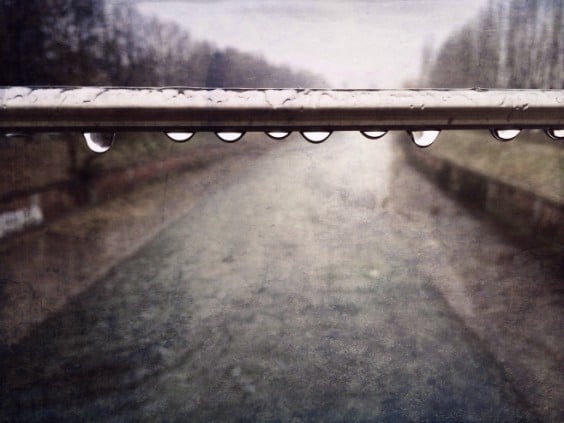
Teardrops on a wet weekend
Tell us about your introduction to mobile photography.
I don’t have a formal training in art or photography, but photography has always been a passion. I bought my first iPhone, a 3GS, in November 2009 but I seldom used the camera. In the second half of 2010 I tried Hipstamatic, and this was the moment that I discovered the potential of an iPhone to be a tool for creative photography. A few months later, in March 2011, I registered on Instagram and my iPhoneographic journey truly began: a few months later my Canon DSLR was a device used less and less.
A key factor that makes mobile photography for me more important that traditional photography ever was is the level of creativity that is implied in the mobile photography “language”. The fact that is a small but cohesive community is also relevant: being able to interact with a good part of the best mobile photographer in the world makes a difference.
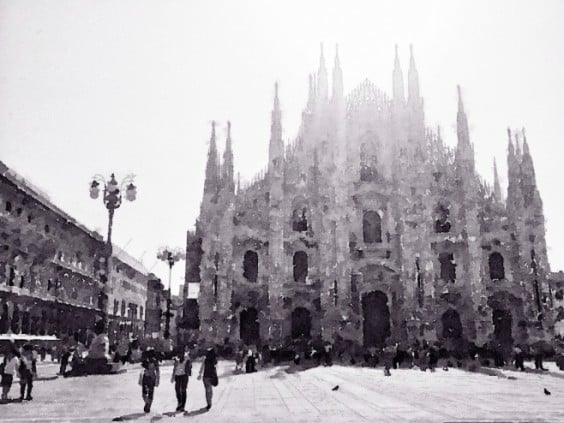
I’ve seen the light in piazza Duomo
Where has your work been exhibited or showcased?
Three of my photos have been on exhibited as part of a collection of photos about the city of Torino at the contemporary art show Artissima (www.artissima.it) in Torino, Italy.
My photo Collapsed was on show at the “Unit24 Gallery” in London as part of the Pixel Revolution Exhibition organized by Mobilepixation. With the same photo I participated to the THE THIRD WAVE exhibition of iPhonic art organized by Knox Bronson from P1xels, my work was on show at the “Garden Gate Creativity Center” in Berkeley, California and at the “Galerie OutOfMyMind” in Bremen, Germany.
My photos have been published on local and national newspapers and magazines in Italy in articles about mobile photography.A number of my photos has been featured on many Mobile Photography blogs and communities, ranging from the sadly closing Iphone Art to P1xels to WeAreJuxt and Art of Mob, and to Mobiography itself, to name just a few.
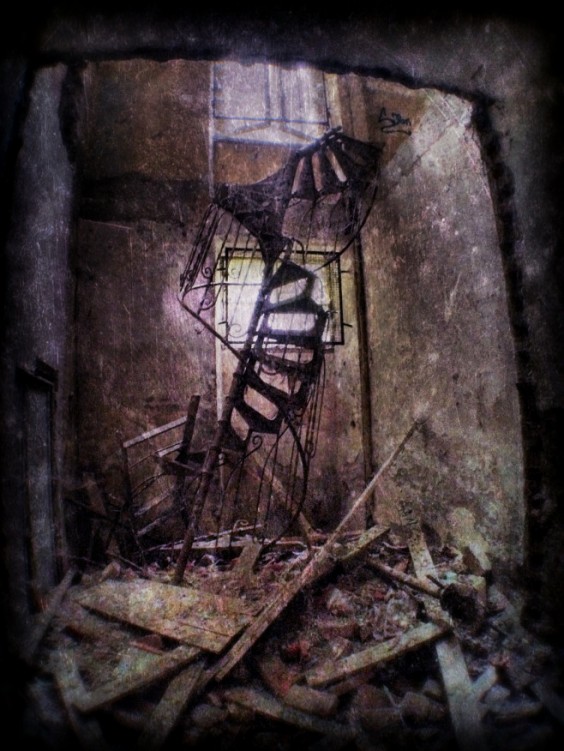
Collapsed
How would you describe your style?
My style is often described as painterly: I love to post process quite heavily my shots in what I would call a process of appropriation of the images I captured.
I always try to inject in my photos a sense of surrealism, I like that they have an oniric feel; this is clearly visible in my latest series “On the fuzzy side of the street”. In this series I bring my love of Impressionism together with the dynamics of Italian futurism painting: Boccioni is another favourite artist.
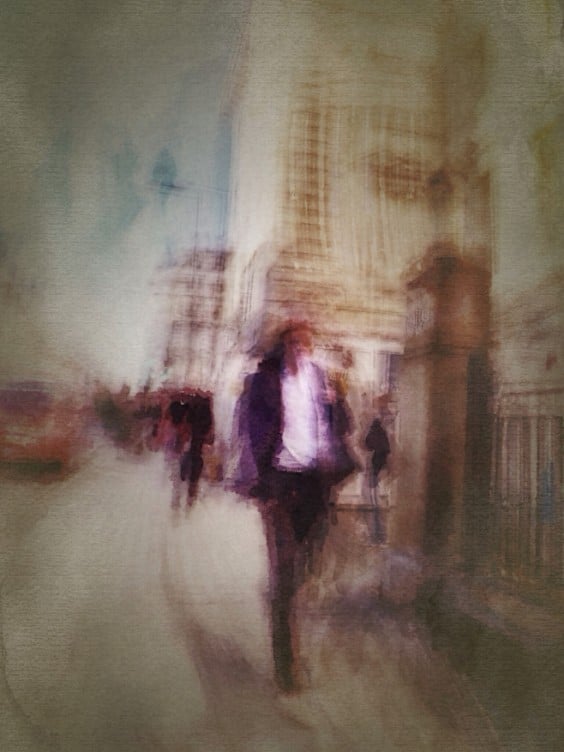
On the fuzzy side of the street 14
Which are your favourite apps and is there a process or methodology that you apply to your post production editing?
Depending on the objectives of editing at the moment I use a number of alternative or complementary apps:
- ProCamera, SlowShutterCam and NightCap for shooting
- Snapseed for cropping and initial tuning of the shot
- Glaze, Repix, Waterlogue for painterly effects
- Modern Grunge , Vintage Scene, Mextures or DistressedFX for grunge effects and textures
- Decim8, Deco Sketch and Tangent for geometric effects
- Image Blender and Filterstorm for blending and layering of images
- Noir and SimplyB&W for black and white
- iColorama for some specific effects such as Warp and Glass
- FocalLab and BlurFX for blur effects
I also use Olloclip lenses, in particular the wide and the telephoto. For street shots I use the HiLo lens, a clever tool to shoot undected.
The production of my images is about 40% rational and 60% instinctive: I follow an established workflow in a flexible way but I don’t have standard recipes, I tend to improvise as I edit. I work on a shot until I am satisfied with the edit, this can involve just 2-3 apps and a few minutes or 6-7 and hours.
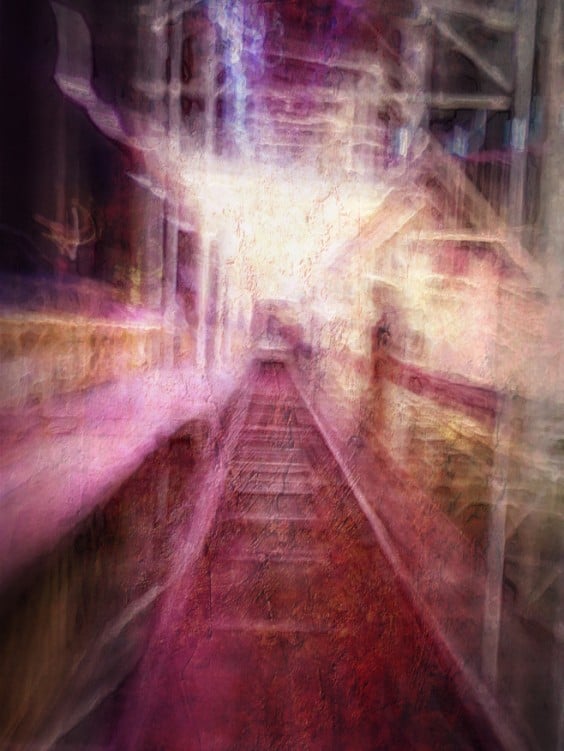
Night Ride 5: the End
What subjects fascinate you and where do you get your inspiration?
The architectural theme was the first to capture my attention: I am lucky to be born in a city (Torino) that has a rich architectural heritage, ranging from medieval to baroque and art nouveau, and I always spent time looking up at the facades of the old houses, maybe in a way I was taking pictures at them with my mind.
So city scenery and architecture has always been a preferred subject of my photography, be it traditional or mobile photography.
Buildings, especially old, and even more if they are abandoned or derelict, have a story to tell, and I like to be a medium for it.
I have a special love for shooting cemeteries, and everything inside them; I love in cemeteries the feeling of strong but restrained emotions that is expressed by funerary art and by the writings on the tombs.
Landscapes have later emerged more and more in my choice of shots, I love the sense of immensity and mystery you can find in the land.
I am bringing the human factor with my own style of street photography, this emerged first in the series “The waiting”, and more intensely these day with “The fuzzy side of the street”.
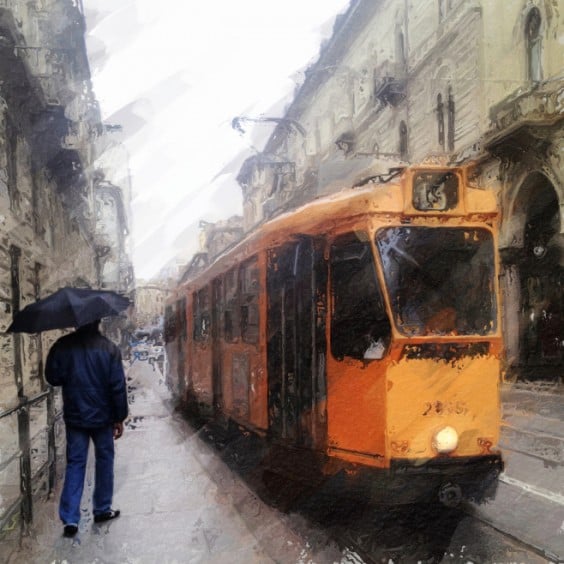
The waiting 15
You are a founder artist of New era museum. Tell us about NEM and what it means to be a part of the group?
I will always be grateful to Andrea Bigiarini, the inventor of NEM, for proposing me to join as a founder artist. Andrea selected the founders to form a group of visionaries: the goal of NEM, as he puts it, is to change the world through the artistic vision of its members.
NEM is a powerhouse of creativity and vision and being part of this group I learned to dare in expressing my creativity and always progress in putting all of myself in my works.
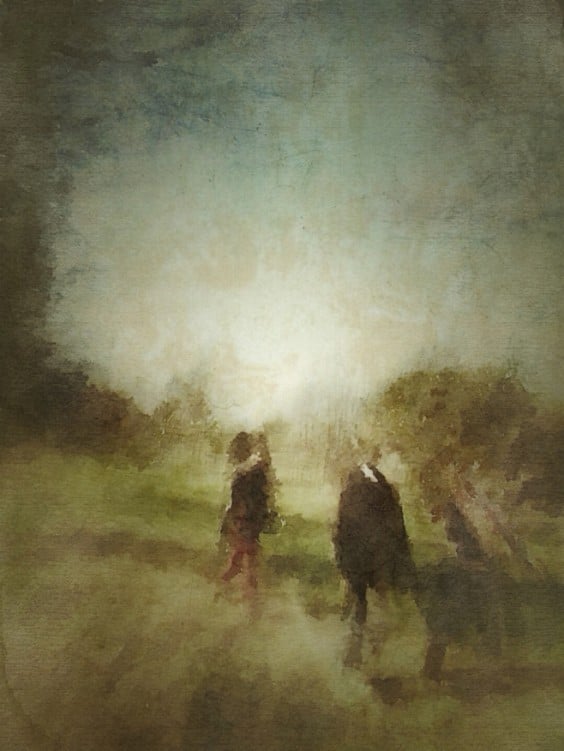
On the fuzzy side of the street 2
If you could spend the day with any photographer or artist, past or present, dead or alive, who would it be and why?
I think I would like to spend a day with Salvador Dali; I love immensely his works but beside this I love the way he made his own life a work of art. You cannot separate the man from his works, they are a continuum and maybe I admire him so because I would like myself to shape my life in a similar way, and I am honestly quite far from it.
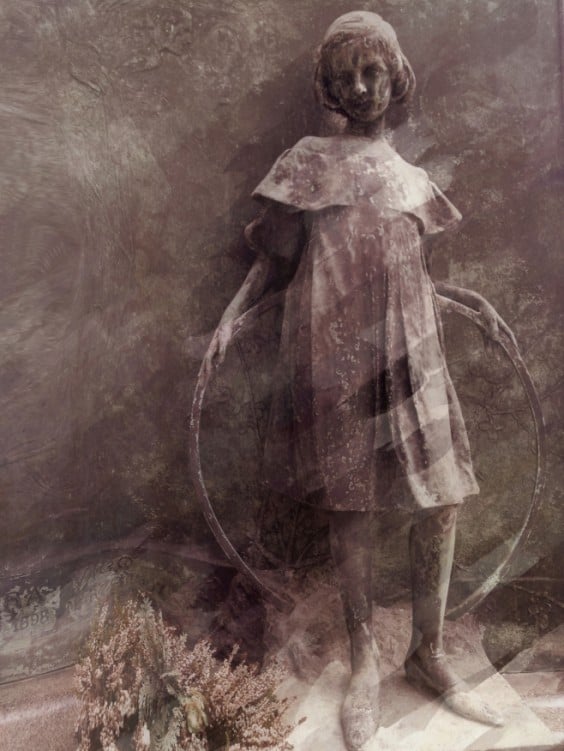
Forgotten games
What would be your top tips or words of wisdom for aspiring mobile photographers or artists?
In the beginning it is useful to observe established artists to learn the language and the techniques of Mobile Photography, emulation and imitation of style are good ways to get the basics. The second step is difficult but crucial: you have to look and find your own voice. This means being daring and experiment a lot in many different directions, it is a rough but fantastic journey; in this endeavor social networks can be at the same time helpful and distracting: having immediate feedback on what you create is a precious input but one must always follow his inner voice avoiding to follow the number of likes received.
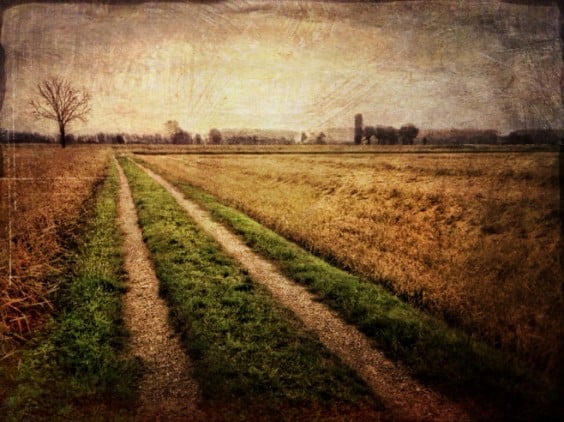
The voice of the land 2
Could you tell us about the photo you are most proud of and the story behind it?
This is the second time I answer this question for Mobiography, the first time I chose Collapsed that has been the first artistic breakthrough in my early career as a mobile photographer, this time I choose a more recent shot that marked a turning point in my style and opened a new way that I have been developing since. I am talking of “Playing on the beach 2”, that is part of a miniseries of shots of my son, well, playing on the beach as it says.
I used SlowShutterCam to shoot the image then processed it with Snapseed, Glaze, DistressedFX, and Repix using ImageBlender to blend the different processing created with the apps.
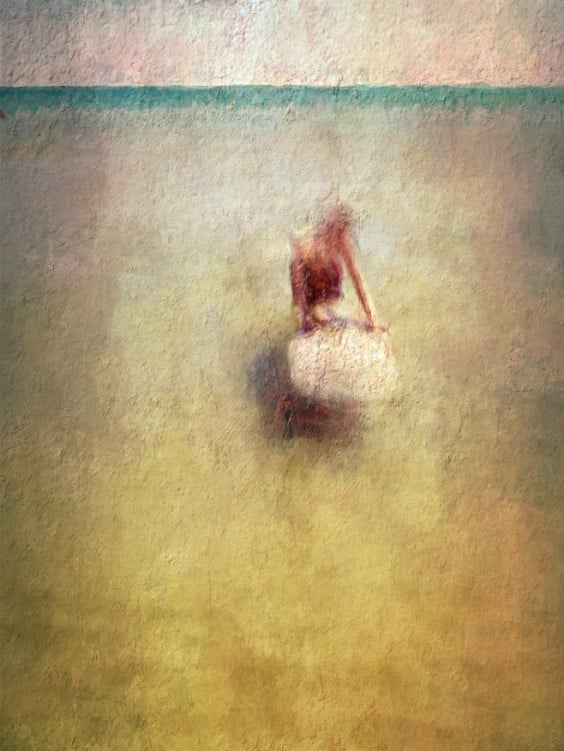
Playing on the beach 2
Connect with Davide Rubicorne
Rubincorno.com | Facebook | Flickr | Instagram | Eyeem





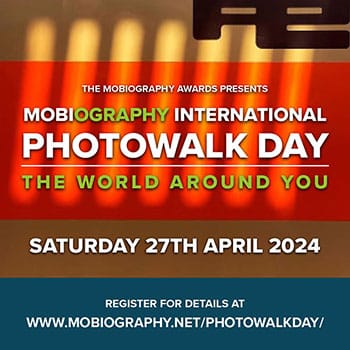

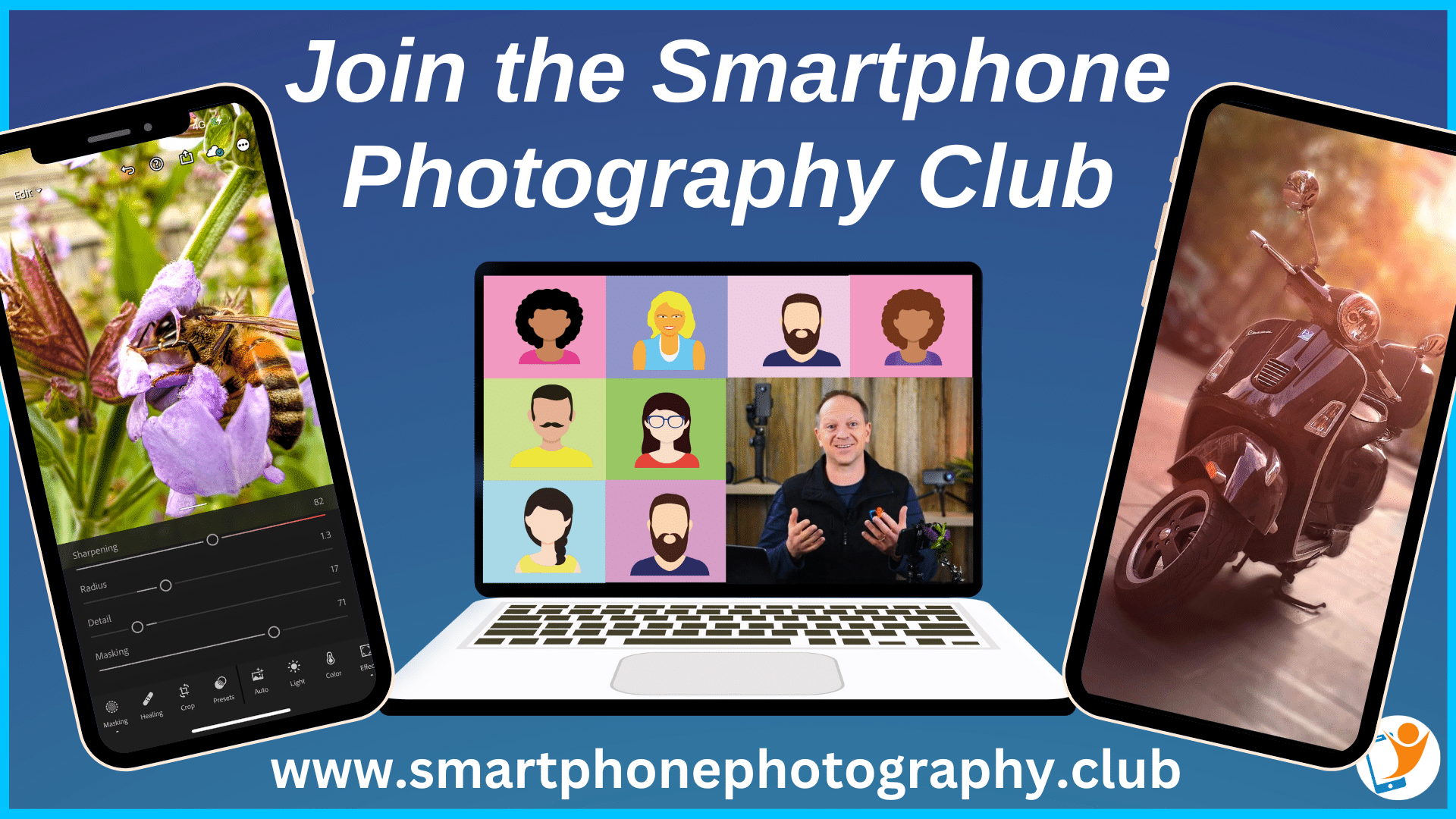
I’ve been following Davide (A.K.A. “Rubicorno”) for a while now. I love his style, especially the “fuzzy side” series. Brilliant work.
Thank you Chris! Appreciate your support!
Davide
Wonderful seeing Davide showcased here – I’ve loved his work since I first saw it!
Thank you so much Geri!
Like so much your works with the orange tram in Turin!